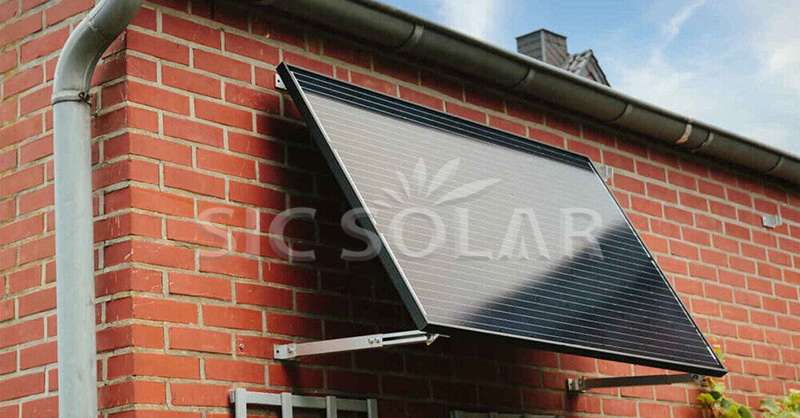Wall-mounted solar panels—panels affixed vertically to building walls rather than pitched rooftops—can achieve similar module efficiencies (15–22%) but typically yield about 29–30% less annual energy than optimally tilted roof installations. Their performance varies with orientation, season, and local climate, yet they offer unique advantages where roof space is limited. Below, we explore how efficient wall-mounted systems are, what affects their output, and how quality mounting solutions—like those from SIC Solar—help maximize their potential.

1. What Are Wall-Mounted Solar Panels?
Wall-mounted solar panels are photovoltaic modules installed on vertical surfaces such as building façades, fences, or noise barriers, rather than on rooftops or ground racks. They are often used in urban settings where roof space is scarce or on historical buildings where roof penetrations are restricted.
2. Typical Module Efficiency Rates
Most modern crystalline silicon panels convert 15–22% of sunlight into electricity under standard test conditions, with top models exceeding 22%. Premium residential modules now push toward 25% efficiency, while even mid-range products regularly exceed 20%.
3. Energy Yield Compared to Roof-Mounted Arrays
When mounted vertically (90° tilt), wall arrays typically produce around 695 kWh per kWp annually, about 29–30% less than south-facing roof arrays at a 38° tilt (~985 kWh/kWp) in the same location. Other studies confirm this gap varies by region—from 9.8% in high-latitude sites like Alaska to 56% in southern locales such as Florida.
4. Factors Affecting Wall-Mount Performance
- Orientation & Seasonality: Vertically mounted panels capture more low-angle winter sun but less high-angle summer sun, causing seasonal swings in output.
- Shading & Surface Reflection: Urban facades may suffer shading from adjacent structures; reflective coatings or bifacial panels can mitigate losses. In shade, panel output can drop by ~50% compared to full sun.
- Temperature Effects: While cooler ambient temperatures can boost efficiency, heat buildup on south-facing walls may slightly degrade performance—typically <1% loss per 5 °C above 25 °C.
- Panel Technology: Crystalline silicon panels outperform thin-film alternatives in vertical applications, offering higher efficiency and better durability.
5. Strategies to Improve Wall-Mounted Efficiency
- Adjustable Tilt Frames: Adding tilt-up mounts (10–15°) on flat walls can recover drainage and seasonal gains, narrowing the yield gap.
- Tracking & Bifacial Designs: Small single-axis trackers or bifacial modules can capture reflected light and improve annual yield by up to 10–15%.
- Anti-Reflective Coatings: Applying coatings reduces glare losses and enhances light absorption on vertical surfaces.
6. SIC Solar Mounting Solutions
SIC Solar specializes in corrosion-resistant aluminum racking and bracket systems for diverse mounting scenarios—including wall installations. Their modular solutions enable secure panel attachment, optional tilt frames, and easy integration with existing façades, ensuring optimal performance and longevity without compromising building integrity.